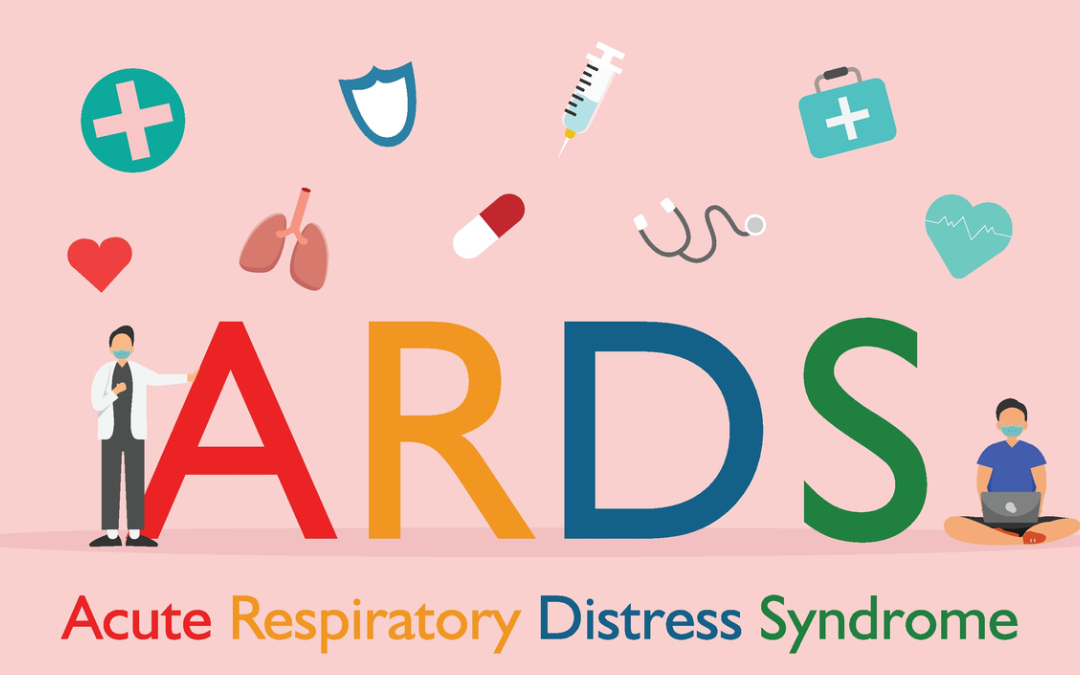Acute Respiratory Distress Syndrome (ARDS) is a clinical syndrome of acute hypoxic respiratory failure caused by pulmonary inflammation rather than cardiogenic pulmonary edema. It was first described in 1967. In 1988, a more precise clinical definition quantified the severity of physiologic respiratory impairment (lung injury score). Since the Berlin definition of ARDS in 2012, several advancements have supported the need for an expanded definition, including the use of high-flow nasal oxygen therapy (HFNO), the expanded use of pulse oximetry instead of arterial blood gas analysis, the use of chest imaging with ultrasound, and the necessity of application in resource-limited settings. To address these changes in evidence and practice, a globally representative consensus conference was held in June 2021, with 32 intensive care ARDS experts from diverse backgrounds participating. They proposed recommendations for updating the definition of ARDS and formulated a new global definition for ARDS.
–ProEclass Respiratory
Rationale. Since the 2012 Berlin Definition of ARDS, several developments support the need for a revised Global Definition ofARDS: (1) the use of high flow nasal oxygen (HFNO) to manage severe hypoxemic acute respiratory failure has markedlyexpanded, but these patients do not meet the Berlin Definition; (2) SpO2/FiO2 by pulse oximetry has been validated as a criterionfor ARDS in observational studies and clinical trials; (3) there is a need to re-evaluate the requirement for bilateral versusunilateral opacities on chest imaging and the use of ultrasound as an additional method for chest imaging; and (4) the BerlinDefinition has limited applicability in resource-variable settings because diagnostic (chest radiograph, arterial blood gasanalysis) and treatment (positive pressure ventilation) modalities are often unavailable. Methods. A consensus conference wasconvened using a cascading recruitment process including 32 critical care ARDS experts (clinicians and investigators),emphasizing diverse clinical, geographic, racial, sex and ethnic backgrounds. The consensus conference had six virtual meetings(June 2021-March 2022) and obtained input from members of several global critical care societies (June-September 2022).Results. The four main recommendations (Table) are (1) to include HFNO with a minimum flow rate ≥30 L/min, or NIV/CPAP withat least 5 cm H2O end-expiratory pressure; (2) to use either PaO2/FiO2 ≤300 mmHg or SpO2/FiO2 ≤315mmHg with SpO2 ≤97%to identify hypoxemia; (3) to retain bilateral opacities for imaging criteria by chest radiograph or computed tomography and to addultrasound (if the operator is well trained); and (4) for resource-variable settings, to not require PEEP, oxygen flow, or specificrespiratory support devices to diagnose ARDS. These recommendations were endorsed by 100% of the consensus conferencemembers. Conclusions. This new Global Definition of ARDS expands upon the Berlin Definition of ARDS. Acutely ill patientsbeing treated with HFNO ≥30 L/min can be diagnosed with ARDS and represent a new category of non-intubated ARDS. Pulseoximetry can be used instead of arterial blood gases for the diagnosis of ARDS. Bilateral opacities should be retained as arequired criterion, and ultrasound is an acceptable imaging modality. Patients in resource-variable settings will no longer beexcluded from the definition of ARDS and will be included in epidemiology, clinical research, and clinical trials. Therecommendations identify areas for future research, including prospective assessments of feasibility, reliability, and prognosticvalidity and the relationship of biological categories of ARDS to the Global Definition.
M. A. Matthay1, Y. Arabi2, A. C. Arroliga3, G. R. Bernard4, A. D. Bersten5, L. J. Brochard6, C. S. Calfee7, A. Combes8, B. Daniel9,N. D. Ferguson10, M. N. Gong11, J. E. Gotts12, M. S. Herridge13, J. G. Laffey14, K. D. Liu15, F. R. Machado16, T. R. Martin17, D. F.McAuley18, A. Mercat19, M. Moss20, R. A. Mularski21, A. Pesenti22, H. qiu23, N. Ramakrishnan24, M. Ranieri25, E. D. Riviello26, E.Rubin27, A. Slutsky28, B. Thompson29, T. Twagirumugabe30, L. B. Ware31, K. D. Wick32; 1Medicine, Anesthesia, andCardiovascular Research Institute, Univ of California At San Francisco, San Francisco, CA, United States, 2King AbdulazizMedical City, Riyadh, Saudi Arabia, 3College of Med Scott & White, Texas A&M Hlth Sci Ctr, Temple, TX, United States, 4Pulm &Crit Care Med T-1218 MCN, Vanderbilt Univ Ctr for Lung Research, Nashville, TN, United States, 5Flinders Medical Ctr,Adelaide, Australia, 6Critical Care Medicine Dept, St Michael”s Hospital, Toronto, ON, Canada, 7Univ of California At SanFrancisco, San Francisco, CA, United States, 8MIR CARDIO PITIE, Paris, France, 9Respiratory Therapy, Univ of California AtSan Francisco, San Francisco, CA, United States, 10Critical Care Medicine, Toronto General Hospital, Toronto, ON, Canada,11Department of Medicine, Montefiore Med Ctr, Bronx, NY, United States, 12Medicine and Anesthesia, UCSF, San Francisco,CA, United States, 13Critical Care Medicine, Toronto General Hosp, Toronto, ON, Canada, 14Anesthesia, University HospitalGalway, Galway, Ireland, 15Medicine and Anesthesia, Univ of California At San Francisco, San Francisco, CA, United States,16Anesthesiology, Pain and Intensive Care, Universidade Federal de Sao Paulo, Sao Paulo, Brazil, 17Medicine, University ofWashington, Seattle, WA, United States, 18Centre for Experimental Medicine, Queen’s University Belfast, Belfast, UnitedKingdom, 19Critical Care Medicine, University of Angers, Angers, France, 20Medicine, Univ of Colorado Denver, Aurora, CO,United States, 21The Center for Health Research, Kaiser Permanente, Portland, OR, United States, 22Dipartimento di AnestesiaRianimazione ed Emergenza Urgenza, Ospedale Maggiore Policlinico, Milan, Italy, 23Critical Care Medicine, Zhongda Hospital,Nanjing, China, 24Critical Care Medicine, Apollo Hospitals, Chenai, India, 25Anaesthesia and Critical Care Medicine, Universityof Turin, Turin, Italy, 26Pulmonary, Critical Care, and Sleep Medicine, Beth Israel Deaconess Medical Center, Boston, MA, UnitedStates, 27ARDS Foundation, Northbrook, IL, United States, 28Critical Care Medicine, St. Michael”s Hospital, Toronto, ON,Canada, 29Pulmonary and Critical Care Medicine, Massachusetts General Hosp, Boston, MA, United States, 30Anesthesia andCritical Care, University of Rawanda, Kigali, Rwanda, 31Medicine, Vanderbilt Univ Sch of Med, Nashville, TN, United States,32Medicine, University Of California at Davis, San Francisco, CA, United States.Corresponding author’s email: michael.matthay@ucsf.edu
Source: D16 ADVANCINGTHE SCIENCE OF ARDS AND ACUTE RESPIRATORY FAILURE / Mini Symposium / Wednesday, May 24/08:00 AM-10:00 AM / Walter E. Washington
Convention Center, Ballroom B (Level 3)
Related Promedicol products:High-Flow Nasal Cannula Oxygen Therapy
Read in Chinese 中文版阅读《急性呼吸窘迫综合症的全球新定义》

